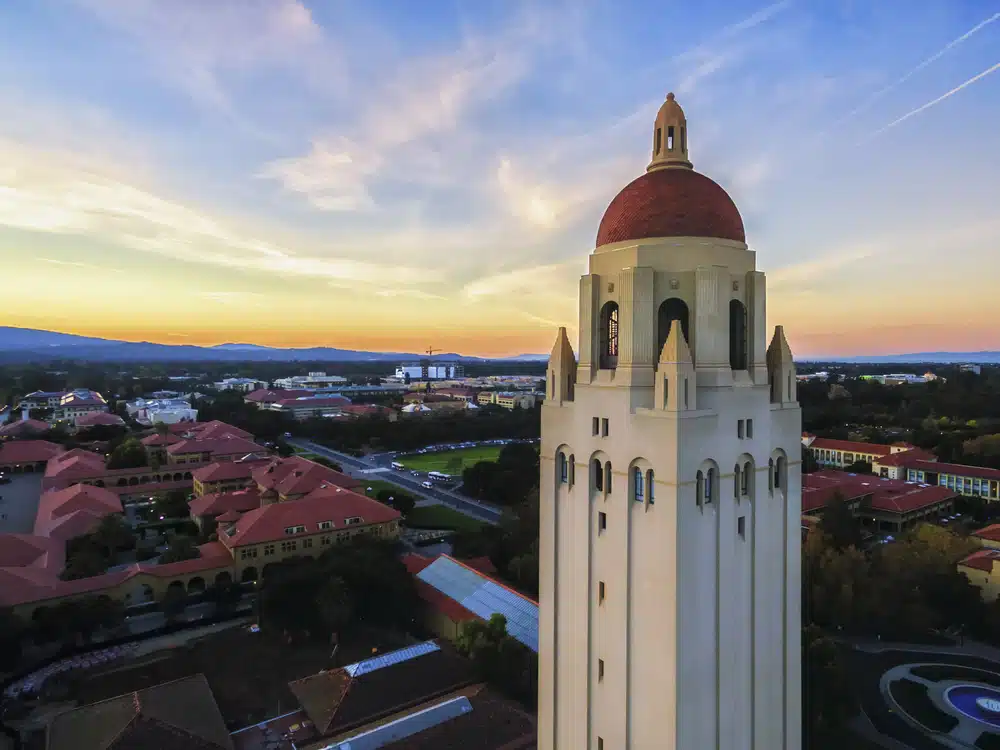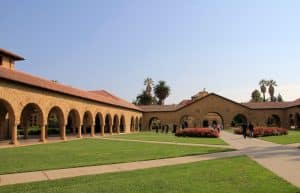Planning for Stanford’s Spring Break 2023
Spring break is a necessary part of any academic year, an oasis of rest amidst the constant push toward educational enlightenment. For students at Stanford University, it is no different. Because of its significance, navigating spring break requires more than just calculated spontaneity; it demands careful planning and preparation.
Understanding Stanford’s Academic Calendar
Having a grasp of Stanford’s academic schedule is a vital first step in optimizing your spring break. This awareness will assist you in setting realistic goals for the semester, as well as paving a smooth pathway towards a replenishing break.
Stanford University operates on a quarter system, which means that the academic year is divided into four quarters: Autumn, Winter, Spring, and Summer. Each quarter has its own distinct academic calendar, with specific dates and deadlines that students must adhere to.
Key Dates for Spring Semester 2023
Stanford University’s spring semester of 2023 extends from April into the beginning of June. This period is filled with a multitude of important dates and milestones that students need to be aware of in order to effectively plan their academic journey.
One of the key dates during the spring semester is the registration period. This is the time when students can enroll in their desired courses for the upcoming quarter. It is crucial to carefully select classes that align with your academic goals and interests.
Another significant date is the census date, which marks the deadline for students to confirm their enrollment status. It is essential to ensure that you have finalized your course schedule and made any necessary adjustments before this deadline.
In addition, the spring semester also has specific last days to withdraw from classes. These dates serve as a reminder that if you are facing challenges or difficulties in a particular course, you have the option to withdraw without academic penalty. It is important to carefully consider your options and consult with academic advisors before making such decisions.
Furthermore, mid-semester breaks are interspersed throughout the spring semester to provide students with a brief respite from their academic responsibilities. These breaks offer an opportunity to recharge, reflect, and rejuvenate before diving back into the remaining coursework.
However, it is important to note that the academic calendar is subject to revision. Stanford University may occasionally make adjustments to the dates and deadlines, so it is crucial to stay updated with any announcements or notifications from the university.
How Spring Break Fits into the Academic Schedule
Spring break is situated about halfway through the Spring semester, acting as a refreshing interlude from the rigorous academic demands. It provides students with a chance to catch their breath, relax, rebuild their energy, and, for many, travel and have adventures before the second part of the semester.
During spring break, students have the opportunity to explore various destinations, both near and far. Some may choose to embark on international adventures, immersing themselves in different cultures and gaining new perspectives. Others may opt for a more low-key break, spending quality time with family and friends, or engaging in hobbies and activities that bring them joy.
Regardless of how students choose to spend their spring break, it serves as a valuable time for self-care and rejuvenation. It allows students to temporarily step away from the pressures of academia and focus on their overall well-being. By taking this break, students can return to their studies with renewed energy, motivation, and a fresh perspective.
Spring break also provides an opportunity for students to reflect on their academic progress thus far and set goals for the remainder of the semester. It is a time to evaluate strengths and weaknesses, identify areas for improvement, and develop strategies to achieve academic success.
In conclusion, understanding Stanford’s academic calendar is crucial for students to effectively plan their spring break and optimize their overall academic experience. By being aware of key dates, milestones, and breaks, students can navigate their academic journey with greater ease and make the most of their time at Stanford University.
Preparing for Spring Break
Utilizing spring break effectively involves preparation. This includes arranging your daily routines, sorting out travel plans or staycation ideas if necessary, and creating a financial plan.
Spring break is a highly anticipated time for students to take a break from their studies and recharge. It’s a chance to relax, explore new places, and spend quality time with friends and family. However, in order to make the most of this time off, it’s important to plan ahead and make sure you have everything in order.
One aspect of preparing for spring break is creating a checklist. Having a checklist is essential for a successful spring break. This list could contain various items depending on individual preferences. However, most checklists should include relaxation goals, travel items, academic targets, fitness objectives, and social activities.
By creating a checklist, you can ensure that you don’t forget anything important and that you make the most of your time off. Assigning realistic timelines to each item and ticking the ones completed serves as motivation and ensures balance throughout the break.
Another important aspect of preparing for spring break is budgeting. Once you’ve set your objectives, the next step is budgeting. Stanford’s spring break is a week long, and creating a budget will help prevent excessive spending. This applies to residents planning on staying within the campus as well as those considering travel opportunities.
When creating a budget, it’s important to consider all the expenses you may incur during your spring break. An appropriate budget should be able to cater to food, transportation, accommodation, emergencies, and recreational activities. By planning ahead and setting a budget, you can ensure that you have enough funds to enjoy your break without worrying about overspending.
Spring break is a time to relax and have fun, but it’s also an opportunity to make the most of your time off. By preparing for spring break in advance, creating a checklist, and budgeting, you can ensure that you have a fulfilling and enjoyable break.
Exploring Spring Break Options
Stanford students have various options when it comes to spring break. Depending on individual preferences, your spring break can involve leisure, exploration, or a combination of both.
Spring break is a highly anticipated time for students to take a break from their academic responsibilities and recharge before the final stretch of the school year. It is a time to unwind, explore new places, and create lasting memories with friends.
Staycation Ideas on Campus
For those who prefer a more relaxed spring break, the Stanford campus offers various enjoyable activities. You can explore the Cantor Arts Centre, where you can immerse yourself in the world of art and culture. The center houses an impressive collection of artworks, ranging from classical to contemporary.
If you’re in the mood for some tranquility and natural beauty, the Stanford Arboretum is the perfect place to visit. With its lush gardens and serene atmosphere, it provides a peaceful escape from the hustle and bustle of campus life. Take a leisurely stroll through the arboretum and admire the diverse flora and fauna.
For adventurous souls, exploring the university’s trails on a bike can be an exhilarating experience. The campus boasts a network of scenic trails that wind through picturesque landscapes. Feel the wind in your hair as you pedal your way through the stunning surroundings.
During spring break, it is also a good time to catch up on reading or indulge in a hobby that you may have neglected during the academic hustle. Find a cozy spot on campus, whether it’s in the library or under a shady tree, and lose yourself in the pages of a captivating book or immerse yourself in your favorite creative pursuit.
Moreover, exploring cafes within the school and neighboring areas can be quite an adventure. Discover hidden gems where you can savor a delicious cup of coffee or enjoy a delectable meal. These cafes often have a unique ambiance that fosters creativity and relaxation, making them the perfect spot to unwind and recharge.
Having meetups with friends and faculty can be both enlightening and refreshing as well. Engage in meaningful conversations, exchange ideas, and gain new perspectives. These interactions can broaden your horizons and inspire you in unexpected ways.
Travel Opportunities during Spring Break
For those inclined towards adventure, spring break offers an excellent opportunity for travel. It is a chance to explore new destinations, immerse yourself in different cultures, and create unforgettable experiences.
You may choose to visit neighboring states and discover the hidden treasures they have to offer. From vibrant cities to breathtaking natural wonders, each place has its own unique charm waiting to be explored. Embark on road trips with friends, where the journey itself becomes an adventure filled with laughter, music, and endless possibilities.
If you’re feeling more adventurous, why not venture outside the United States? Traveling internationally during spring break can be an eye-opening experience. Immerse yourself in different cultures, try new cuisines, and witness iconic landmarks firsthand. However, it is important to remember that proper planning is key to a successful travel experience. Ensure you have the necessary documentation for international travel and consider obtaining travel insurance for added peace of mind.
Whether you choose to stay on campus or embark on a travel adventure, spring break is a time to rejuvenate and explore. It is an opportunity to step out of your comfort zone, try new things, and create memories that will last a lifetime. So, embrace the freedom that spring break brings and make the most of this well-deserved break!
Safety Measures for Spring Break
While planning for spring break, it’s crucial to focus on safety, whether you’re planning a staycation within Stanford or considering travel.
Spring break is a time for relaxation and fun, but it’s important to prioritize your well-being. Whether you’re staying on campus or venturing off to a new destination, taking the necessary safety measures can ensure a smooth and enjoyable break.
Health and Wellness Tips
Keeping in mind the global health situation, it is necessary to adhere to health guidelines. Whether you’re on the Stanford campus or elsewhere, wash your hands frequently, engage in safe social interactions, and maintain a well-balanced diet.
During spring break, it’s easy to get caught up in the excitement and forget about self-care. However, taking care of your physical and mental health is essential. Use this time to catch up on missed sleep and also keep active. This could mean going for a run, joining a yoga class, or simply enjoying a recreational sport.
Additionally, make sure to stay hydrated and protect yourself from the sun. Apply sunscreen regularly and wear appropriate clothing and accessories to shield yourself from harmful UV rays. Taking these simple precautions can prevent sunburns and other skin-related issues.
Travel Safety Guidelines
If you plan to travel, adhere to all travel advisories. When visiting new destinations, be aware of your surroundings and take note of emergency contacts in the area.
Exploring new places can be exciting, but it’s important to prioritize your safety. Research the local customs and laws of your destination to avoid any misunderstandings or legal issues. Familiarize yourself with the local transportation system and plan your routes in advance to minimize the risk of getting lost.
Renting vehicles from credible sources is crucial to ensure your safety on the road. Before renting a car or scooter, thoroughly inspect it for any damages and make sure it is in good working condition. Familiarize yourself with the local traffic rules and regulations to avoid accidents.
Staying connected with friends and family is essential, especially when traveling alone. Share your itinerary with someone you trust and regularly check in with them. This way, they can be aware of your whereabouts and provide assistance if needed.
Keeping personal items secure is another important aspect of travel safety. Invest in a reliable lock for your luggage, and always keep an eye on your belongings. Avoid carrying large amounts of cash and use secure methods of payment whenever possible.
By following these safety measures, you can make the most out of your spring break while ensuring your well-being. Remember to have fun, but always prioritize your safety and the safety of those around you.
Making the Most of Your Spring Break
At the end of the day, the goal of spring break is to rejuvenate while maintaining academic focus. Here are some tips to achieve this.
Balancing Rest and Productivity
To return from your spring break feeling refreshed and energized for the upcoming academic pressures, achieving a balance between rest and productivity is crucial.
This could mean allocating time to rest and time to work on projects or subjects you struggle with. Remember, the key is balance.
Post-Break Transition: Getting Back into the Academic Groove
Signing off from spring break and delving back into academia can be quite challenging. A useful tip is to ease back into the academic groove gradually.
Start by reviewing your notes, revive your academic routine, and get your mindset back to focus mode. This way, you’ll set a smooth course for the remainder of the academic semester.
In conclusion, spring break at Stanford is a time for relaxation, productivity, and adventure. With proper planning, adherence to safety guidelines, and getting back on track academically, you are set to have the perfect spring break at Stanford 2023.
How AdmissionSight Can Help You With College Admissions
AdmissionSight is a college consulting firm that provides personalized assistance to students throughout the college admissions process. Here are some ways that AdmissionSight can help you:
Admissions strategy: AdmissionSight can help you develop a strategic plan for your college application process. Our professional consultants can assist with identifying schools that are a good fit for your academic, extracurricular, and personal goals and help you plan and prioritize your application strategy.
Application review: AdmissionSight can review your application and provide feedback on how to improve it. We can offer suggestions on making your application stand out and highlighting your strengths and unique qualities.
Essay coaching: AdmissionSight can help you craft compelling essays that showcase your personality, goals, and achievements. We can guide you through the essay writing process and provide feedback on your drafts to help you refine your writing.
Interview preparation: AdmissionSight can provide interview coaching to help you feel confident and prepared for college interviews. Our experts can offer tips on how to present yourself professionally and how to answer common interview questions.
Extracurricular planning: AdmissionSight can help you plan and develop your extracurricular activities to make them more impactful and meaningful. We can suggest activities that align with your interests and goals and provide guidance on demonstrating your leadership and initiative.
Overall, AdmissionSight can provide valuable guidance and support throughout the college admissions process to help you maximize your chances of getting accepted into the college of your choice.
With a high success rate of over 75%, we have built a strong network in the past decade. Book an initial consultation today, free of charge!









































